Moonbase Guide
by Martin Willey
Several shots showed the Moon horizon. For this, a barrel shaped moon was used. Crater walls show sharp shadows, and larger crater floors are darker like lunar maria. One rugged crater has notable rays. The model is seen throughout both series.
The barrel moon was just a large metal barrel, 2.3m wide and 0.90m diameter, which was rotated using a motor. It was also used in Gerry Anderson's Terrahawks (SFX director Steven Begg found the model at Bray studios), and in Blakes 7.
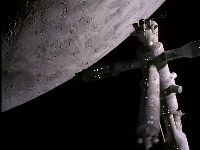
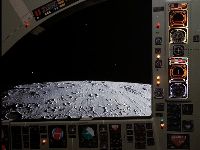
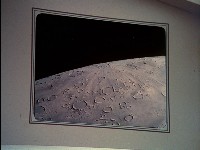
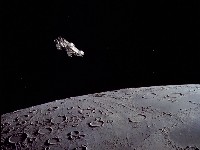
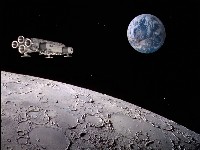
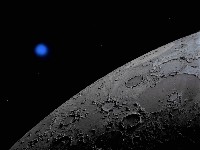
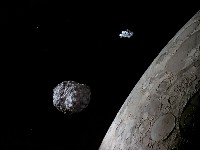
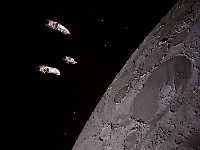
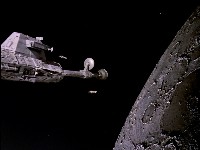
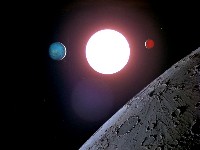
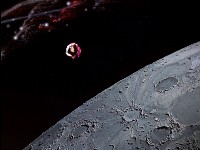
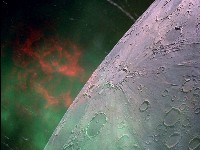
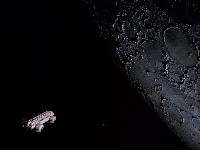
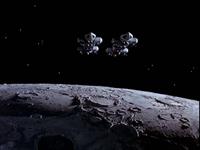
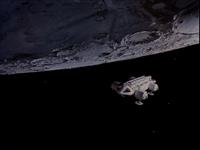
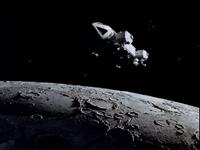
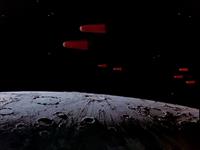
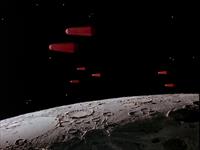
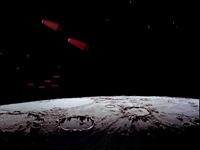
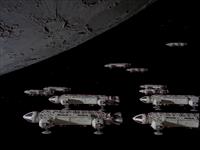
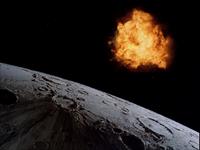
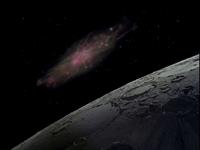
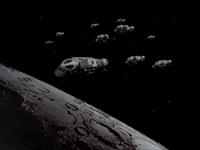
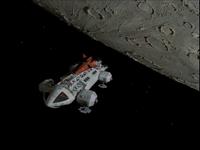
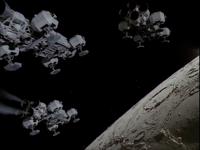
Marcus Lindroos has mapped the barrel shaped moon model, using projection software. The map on the right was made using the MMPS tool. It's rectilinear, which means the vertical equatorial area is correct, however, the areas near the edges are distorted.
The second image shows the "barrel moon" superimposed onto a rectilinear map of the actual lunar surface. The equatorial location is purely conjectural -- a polar location seems more probable -- but the images are to scale. The largest craters are more than 150km across and the total surface area is about 850 000 sq.km. The prominent ray crater in the middle has a diameter of about 60 kilometres, comparable in size to nearside ray craters such as Aristarchus, Kepler or Anaxagoras.
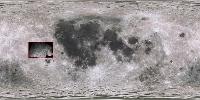
The barrel shaped model provides a surprisingly realistic view of the lunar surface from a spacecraft orbiting at 100-200km altitude (the main drawback is the craters scroll out of view more quickly than they would if the moon model were a sphere). The horizon is typically about 400km away and the ray crater in the middle is usually moving towards or away from the spacecraft. This is presumably the general location of Moonbase Alpha.
Copyright Martin Willey